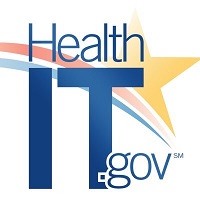 Health IT Advisory Committee Makes Recommendations to Reduce Burden and Improve Care
Health IT Advisory Committee Makes Recommendations to Reduce Burden and Improve Care
By Michael Wittie and Thomas A. Mason, ONC
Twitter: @ONC_HealthIT
The Health Information Technology Advisory Committee (HITAC) recently approved a report and set of recommendations developed by the Intersection of Clinical and Administrative Data (ICAD) Task Force.
The ICAD Task Force was established to produce information and considerations related to the merging of clinical and administrative data. The Task Force included a range of stakeholders as well as members of the HITAC and the National Committee on Vital and Health Statistics (NCVHS). To meet the HITAC’s charge, the ICAD Task Force began with prior authorization as the initial use case.
Today, patients, caregivers, and clinicians struggle with information exchange barriers due to the separation of clinical and administrative data. The effect of this is especially clear in the case of prior authorization, where inefficient information exchange can significantly delay or obstruct patient access to treatment and payment for healthcare services. Clinicians also report that finding and exchanging information for prior authorization is a major source of burden. To structure its recommendations, the ICAD Task Force developed a series of guiding principles to make sure the recommendations addressed the gaps between the present and ideal state.
Using what they learned about the current state of prior authorization, the ICAD Task Force members examined what is needed to electronically support health system improvement while reducing burden experienced by patients and clinicians across the broader ecosystem of clinical and administrative data exchange. Then, they developed a set of recommendations to achieve the ideal state for all stakeholders while adhering to the guiding principles.
The final recommendations are:
- Prioritize Administrative Efficiency in Relevant Federal Programs
- Establish a Government-wide Common Standards Advancement Process
- Converge Health Care Standards
- Provide a Clear Roadmap and Timeline for Harmonized Standards
- Harmonize Code and Value Sets
- Make Standards (Code Sets, Content, Services) Open to Implement Without Licensing Costs
- Develop Patient-centered Workflows and Standards
- Create Standardized Member ID
- Name an Attachment Standard
- Establish Regular Review of Prior Authorization Rules
- Establish Standards for Prior Authorization Workflows
- Create Extension and Renewal Mechanism for Authorizations
- Include the Patient in Prior Authorization
- Establish Patient Authentication and Authorization to Support Consent
- Establish Test Data Capability to Support Interoperability
The recommendations support the U.S. Department of Health and Human Services’ (HHS) priority of reducing the burden of clinical documentation, as outlined in the Strategy on Reducing Regulatory and Administrative Burden Relating to the Use of Health IT and EHRs Final Report. The recommendations pave a path to improved information exchange across the clinical and business aspects of the nation’s healthcare system, and HHS is already taking steps to advance them.
ONC would like to thank the members of the ICAD Task Force, the HITAC, and the public stakeholder contributors for their diligent work on this project, their dedication to improving healthcare in the United States, and for giving us the opportunity to be part of this visionary work.
Read the final report with details of the ideal state, guiding principles, and recommendations.
This post was originally published on the Health IT Buzz and is syndicated here with permission.
